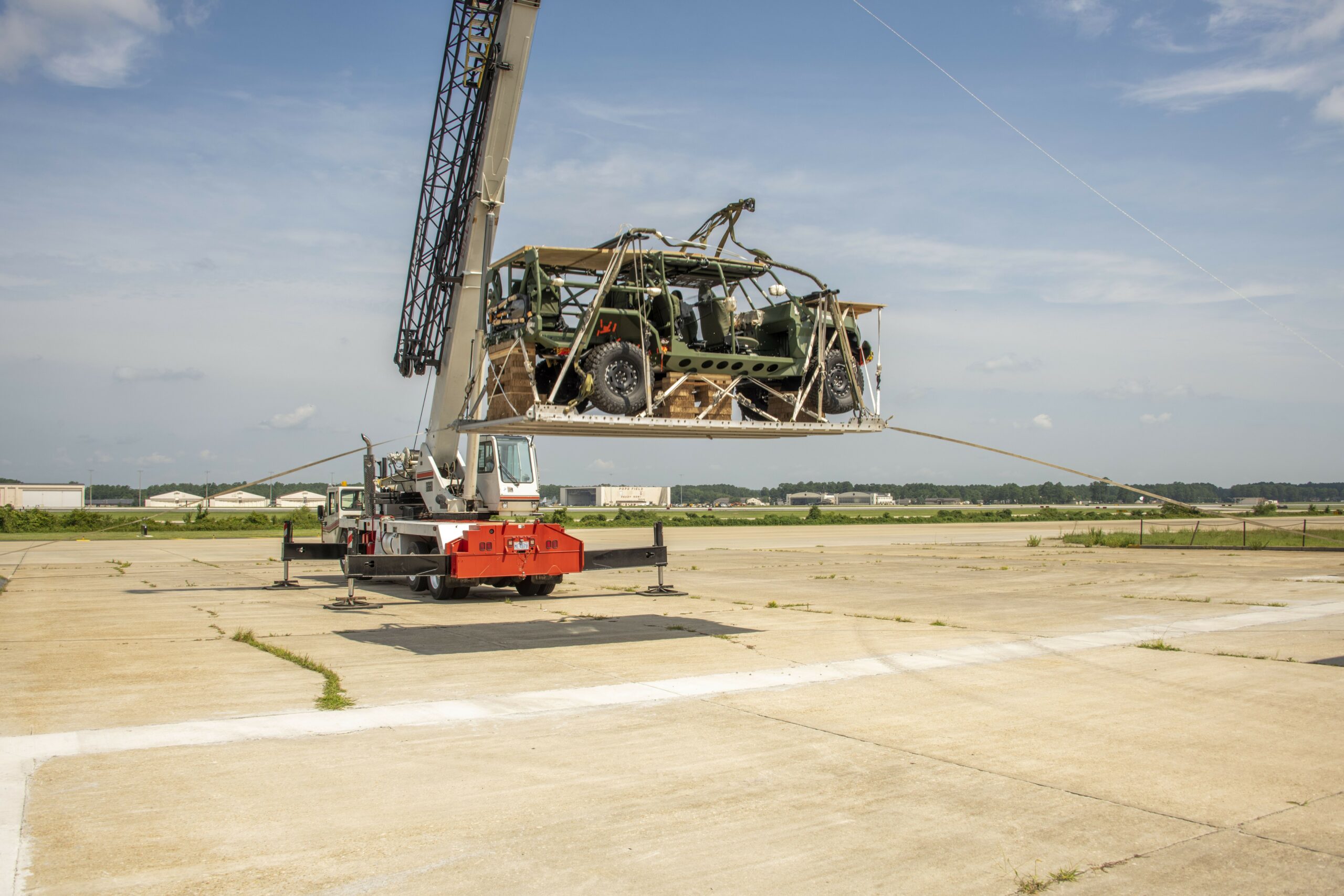The US Army has conducted low-velocity airdrops of infantry squad vehicles (ISVs) after General Motors Defense applied structural and mechanical changes to the carriers.
The ISV test, led by the army’s Operational Test Command Airborne and Special Operations Test Directorate (ABNSOTD), follows previous developmental testing, in which the ISVs encountered material problems, including “insufficiently ruggedized” vehicle components.
“Testing centered around determining if production representative mode (PRM) ISVs could tolerate the forces experienced during low-velocity airdrop operations (LVAD),” said ABNSOTD Chief of Test Division Lt. Col. Derek Johnson.
Simulated Airdrop Impact Testing
With the modifications, each vehicle underwent a rigging exercise with a Type V LVAD (low-velocity airdrop) platform and a Dual Row Airdrop System platform.
The ISVs were then tested under Simulated Airdrop Impact Testing (SAIT), wherein the units were raised by crane and free-dropped to simulate the impact velocity.
The test materials, courtesy of the Combat Capabilities Development Command Soldier Center, included a modified paperboard honeycomb kit and rigging equipment to accommodate the two production representative ISV models.

“During the execution of the SAITs, high-speed video, photography, and instrumentation (accelerometers and impact data recorders) were employed to assess the PRM ISV’s reaction to the forces experienced during LVAD operations,” added ABNSOTD Electronics Engineer Michael Estremera.
Alongside the drop tests, the ISVs underwent a 50-kilometer (31-mile) road test on various terrain.
The event concluded with an inspection by experts from ABNSOTD, General Motors Defense, and the ISV Program Office.
US Army ISV
The US Army ISV was designed for Infantry Brigade Combat Team transport and patrol missions in complex terrain.
It can carry up to nine soldiers, is light enough to be sling-loaded from a UH-60 Blackhawk helicopter, and compact enough to fit in a CH-47 Chinook helicopter.
The vehicle can be deployed through aerial, land, and sea transport during missions.
“This capability is required across the range of military operations facing Infantry Brigade Combat Teams conducting crisis response, initial entry, and selected decisive action missions,” ABNSOTD Military Test Plans Analyst James Cochran explained.
“The speed and maneuverability of the ISV, along with its capability to easily negotiate all types of terrain should impart confidence in the Infantrymen that will be utilizing this vehicle in real world and training operations,” ABNSOTD Infantryman Sgt. 1st Class Marcus Love added.












